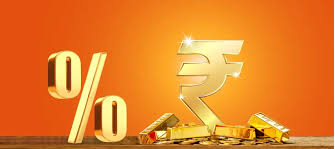When you admire the shine of your wedding ring or appreciate the sleek aluminum frame of your smartphone, you’re already connected to the intricate and exciting world of commodities trading, specifically, the metals market. Trading precious and industrial metals such as gold, silver, platinum, and copper isn’t just reserved for professional investors. With a solid understanding of the dynamics behind these metals, traders at all levels can confidently explore opportunities within this vibrant financial space.
Precious Metals—Beyond Gold and Silver
Precious metals, most notably gold, silver, and platinum, have historically attracted traders seeking stable investments, hedges against inflation, or simply speculative profits. While gold and silver are widely recognized for their financial significance and role in jewelry, platinum and palladium are critical to various industrial processes, from automotive manufacturing to electronics. Each metal carries unique trading characteristics, influenced by specific global economic conditions, production trends, and consumer demand patterns.
For example, gold often acts as a safe-haven asset during times of economic instability or inflation, attracting traders looking to preserve wealth. Conversely, copper is more sensitive to economic cycles and industrial demand, reflecting the overall health of the global economy.
Key Factors Driving Metal Prices
Trading precious and industrial metals within the commodities trading landscape requires awareness of several key factors. Supply constraints significantly influence prices. A strike in a major copper-producing region, or mining disruptions in silver production, can dramatically affect prices. Traders who closely monitor production news gain insights that help them anticipate price movements and seize profitable opportunities.
Demand also plays a pivotal role. Rapid growth in industries such as renewable energy or electric vehicles significantly boosts demand for metals like lithium, cobalt, and copper. Traders who recognize these trends early can position themselves strategically to capitalize on future price rises driven by industrial expansion.
Trading Metals with Futures Contracts and ETFs
Trading metals commonly occurs through futures contracts, exchange-traded funds (ETFs), or even through direct investment in physical bullion. Futures contracts allow traders to speculate on price changes without holding the physical metal. Traders can easily buy or sell these contracts through exchanges like the London Metal Exchange (LME) or Chicago Mercantile Exchange (CME), gaining exposure to market movements without storage costs or logistical concerns.
Exchange-Traded Funds (ETFs), on the other hand, provide an accessible way for investors to gain exposure to metals, tracking the price movements of underlying commodities closely. ETFs are especially attractive to investors seeking convenience and diversification without directly engaging in futures-based commodities trading.
Trading Strategies for Metals Markets
Successful commodities traders commonly blend fundamental and technical analyses. Fundamental analysis involves tracking global economic conditions, geopolitical tensions, and industrial trends to predict price movements. Traders might monitor central bank decisions, currency fluctuations, or trade policies to determine how these factors will affect metal prices.
Technical analysis, using historical price data, chart patterns, and trading indicators, further enhances trading strategies. Traders might identify trends or resistance levels, timing entries and exits to maximize profits while minimizing risks.
Navigating Risks in Metals Trading
Though metals markets offer attractive profit potential, they carry volatility risks. Prices can shift rapidly due to sudden geopolitical events, economic data releases, or unexpected shifts in industrial demand. Effective risk management, including setting stop-loss orders, diversifying trades across multiple metals, and maintaining disciplined strategies, helps mitigate these risks.
Moreover, metals markets can be cyclical, experiencing periods of high volatility followed by relative stability. Recognizing these cycles is key to long-term success in commodities trading, enabling traders to adjust their strategies accordingly.
Metals Trading: An Exciting Opportunity
The metals market within commodities trading offers vibrant opportunities for traders willing to engage thoughtfully and strategically. Whether drawn by gold’s stability, silver’s industrial importance, or copper’s integral role in modern technology, understanding each metal’s dynamics opens doors to rewarding trades. With the right knowledge, clear strategies, and diligent risk management, traders at every level can confidently unlock the immense potential within precious and industrial metals trading.






